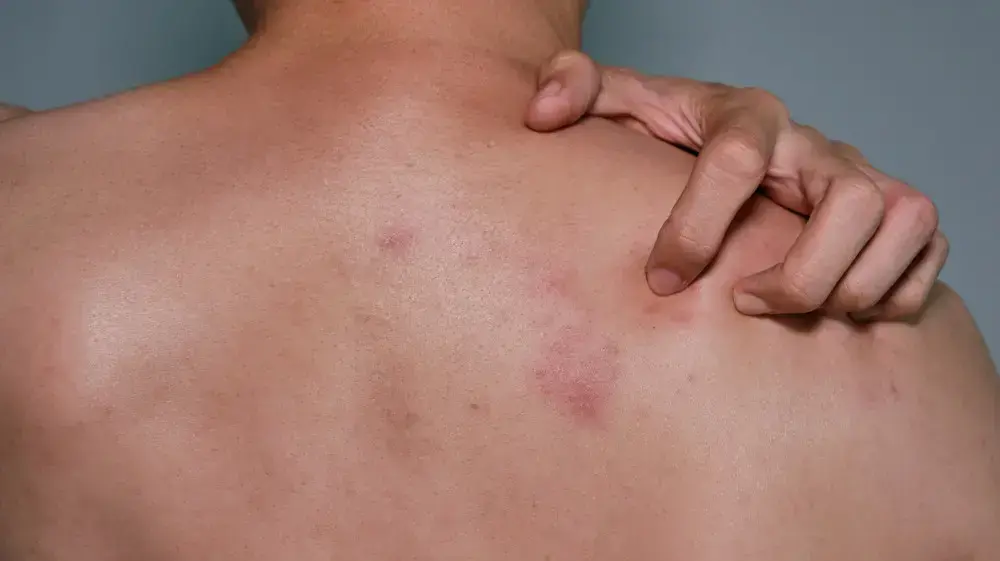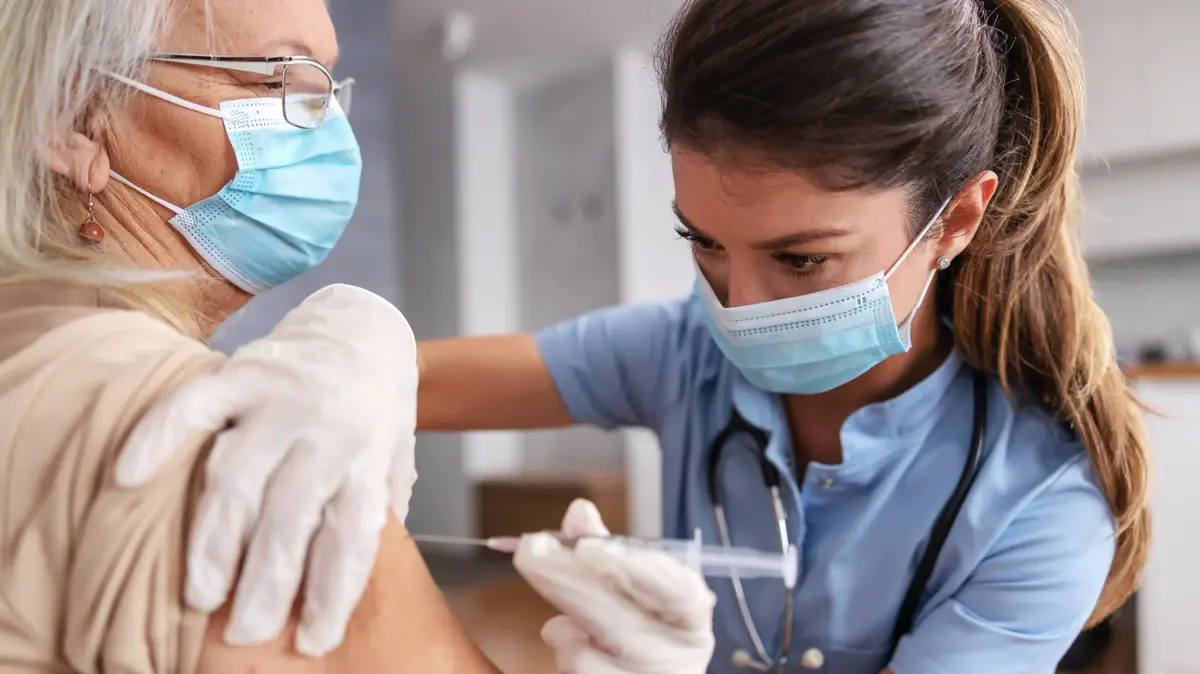Shingles: Why does it happen - and how is it treated?
People who got chickenpox as children walk around with a dormant virus in their body, which can suddenly erupt and cause terrible pain and alarming blisters.
We examined who is at higher risk of getting sick, and how to treat.
Here are the answers
Dr. Liora Barzag Pro
06/07/2022
Wednesday, 06 July 2022, 08:00 Updated: 08:27
Share on Facebook
Share on WhatsApp
Share on Twitter
Share on Email
Share on general
Comments
Comments
It hurts.
is very.
Outbreak of shingles in the back (Photo: ShutterStock)
Those of us who contracted chickenpox in childhood have a hard time forgetting the rash and bothersome itching that accompany the disease, which is also characterized by high fever and muscle aches.
Complications of the disease can include pneumonia and encephalitis, secondary skin infections and impaired kidney function.
But that's not all: another and late complication of the disease may be the development of herpes zoster, in English Shingles, or in Hebrew shingles.
Since the vaccine against the disease entered Israel in 2007 and was added to the triple childhood vaccine routinely, a significant decrease in morbidity has been observed.
However, quite a few adults still suffer from shingles, and report severe pain and prolonged suffering.
So why does this happen, and how do you treat the painful symptoms?
Important Information
7 risk factors for heart disease and one way to identify early and prevent damage
Served on behalf of Shahal
why is it happening?
The cause of chickenpox is a virus from the herpes family called varicella zoster virus, or varicella zoster virus VZV, which after recovery from chickenpox remains dormant in the tubers and nerve roots in our body.
When there is a decrease in immune system function, or in older people, sometimes even decades after the initial disease, the virus may re-erupt in the form of shingles.
The virus can also break out due to high fever, stress, trauma or radiotherapy.
What are the symptoms of shingles?
Herpes zoster erupts as a characteristic blistering rash along dermatomas - areas along the spine that are shaped by the same nerve in which the virus is dormant.
Therefore, the rash appears in different areas of the body, but always in the form of a half-belt, face, back and pelvis and limbs.
The outbreak is characterized by intense pain in the same area where there is a rash.
The pain sometimes appears at the same time as the rash appears but sometimes precedes it, sometimes even for an entire month.
How long does it last?
The rash usually lasts about a week to ten days, and is not life-threatening.
How is it treated?
Treatment includes antiviral drugs that shorten the time of pain and recovery.
People with suppressed immune systems or damage to the zoster in the eye will likely need to receive antiviral therapy by intravenous infusion.
Moreover, the symptoms of the disease should be treated by topical analgesics and ointments.
Sticker on touch.
Dislocation of shingles in the hand (Photo: ShutterStock)
Is it contagious?
The rash blisters of shingles contain the virus itself, so the disease is contagious by contact.
A person who comes in contact with the contaminated liquid may get chickenpox.
For the vaccinated and those who have had it in the past, the risk of the disease decreases significantly but still exists.
Does the disease have long-term consequences?
A major complication of the disease is chronic pain that occurs mainly in adults over the age of 60. Another phenomenon, which recently made headlines following the confession of Justin Bieber, is Ramsey Hunt Syndrome.
This syndrome is basically the appearance of herpes zoster in the facial area - which can cause paralysis of the facial nerves and consequently damage to the face, expressions and senses.
The nerves that tend to be damaged are usually cranial nerves number 3, 4 and 6 and thus will cause sagging of one side of the face, impaired vision or hearing.
How can shingles be prevented?
The best way to prevent an outbreak of shingles is to prevent an outbreak of chickenpox.
The chickenpox vaccine is considered an active vaccine in that it contains the live virus in a small and attenuated amount, thus encouraging the immune system to produce antibodies.
The vaccine is very effective in childhood, and antibodies develop in 9 out of 10 children who have been vaccinated against it.
However, its effectiveness probably decreases when it is given in adolescence or adulthood, so its effectiveness reaches only 75 percent.
Side effects from the vaccine include a reaction in the injection site (redness, stiffness and local pain), and since it is a live attenuated virus about 5 percent of those vaccinated will develop fever and rash similar to chickenpox.
Serious side effects are extremely rare but present, such as pneumonia or meningitis.
There are also two vaccines targeted against the zoster outbreak of the same virus.
health
My health
Doctor, what have I got
Tags
herpes
Chickenpox
Vaccines
Pain









